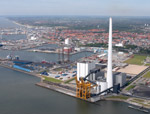



Estimates for current and future costs of CO2 capture and storage have considerable uncertainties. While some CO2 capture and storage components are already deployed in mature markets for certain industrial applications, the technology has still not been used in large-scale power plants, the application with most potential.
In a fully integrated system, the cost of capture and compression would normally be the largest cost component. Generally, geological storage is estimated to be more economical than ocean storage, the most expensive storage option being mineral carbonation.
Overall costs will depend not only on the capture system used, the type of storage and the transport distance, but also on variables such as plant design, operation, financing, size, location, fuel type as well as fuel and electricity costs.
Under current conditions, producing electricity costs about US$0.04 – 0.06/kWh. Adopting today’s CO2 capture and storage technologies would raise this cost by an estimated US$0.01 – 0.05/kWh. This could be reduced by about US$0.01 – 0.02/kWh if the revenues from Enhanced Oil Recovery partly compensated for the costs.
When CO2 capture and storage is compared to other technical options for reducing CO2 emissions, it must be kept in mind that 10-40% more energy is needed for producing the same amount of electricity. The costs per tonne of CO2 avoided show a large range. A significant part of the technology’s potential is available at costs that are higher than those of many other options for improving energy efficiency, but lower than those of most solar power options.
When planning the construction of a new plant, calculating the cost implications of adding a CO2 capture and storage system could influence the type of plant chosen. The technology can be applied to current generation technologies such as pulverized coal or natural gas combined cycle (NGCC). However, the additional costs will be lower when CO2 capture and storage is integrated into emerging technologies such as integrated gasification combined cycle (IGCC) and pre-combustion hydrogen production facilities. While most existing facilities could be retrofitted to accommodate CCS systems, the costs will be significantly higher than for new plants with CCS.
The future costs of CO2 capture and storage could decline as technology advances and once it is used on a large scale– perhaps by 20 - 30% over the next decade. However, rising fossil fuel prices could push costs up. Because biomass plants are currently small in size, the costs of CO2 capture and storage would be relatively high. Costs for CO2 capture and storage from industrial processes other than power generation can be lower than those for electricity plants, particularly for process such as hydrogen or ammonia production that already separate CO2. More...

This summary is free and ad-free, as is all of our content. You can help us remain free and independant as well as to develop new ways to communicate science by becoming a Patron!